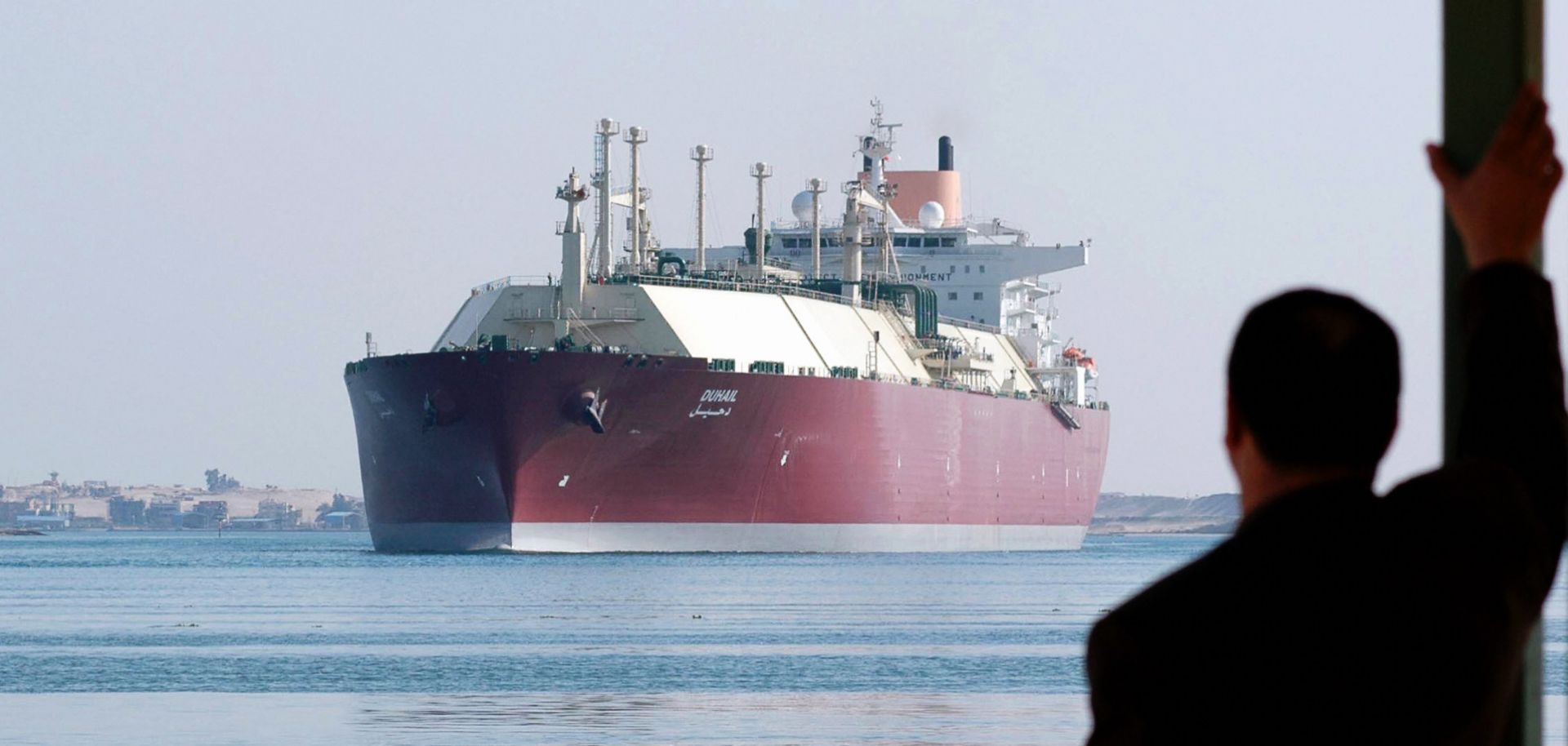ASSESSMENTS
In Egypt, Reforms Seek to Revive the Natural Gas Sector
Apr 21, 2015 | 09:00 GMT

(-/AFP/Getty Images)
Summary
Egyptian President Abdel Fattah al-Sisi is making strides in reforming Egypt's natural gas sector. Earlier this month, the Hoegh Gallant, a floating storage and regasification unit, arrived at the Gulf of Suez port city of Ain Sokhna. Egypt has attempted to lease such a facility for several years, and with the aid of multilateral institutions and Gulf countries, it finally finalized a deal for the unit in November 2014.
Egypt has struggled to maintain its natural gas production levels, while domestic energy consumption has risen by more than 50 percent over the last decade. Energy subsidies have only accelerated domestic consumption, which for natural gas now totals more than 50 billion cubic meters per year. Production growth has stalled in response to a lack of investment, and Egypt's policy of selling expensive imported energy at low prices on the domestic market has drained the country's coffers.
Al-Sisi has begun taking steps to address Egypt's energy dilemma, at least in the natural gas sector, which will in turn affect the country's industrial and power generation sectors. In July 2014, he significantly curtailed a number of the subsidy programs burdening Cairo's finances, leading to several deals with international oil companies whose projects had been stalled due to a lack of funds and confidence that payments would be made. While these changes bode well for a revival of Egypt's natural gas sector, the country will remain limited in its ability to bring down the costs of increasingly expensive imports and subsidies of other goods, including oil and food.
Subscribe Now
SubscribeAlready have an account?
